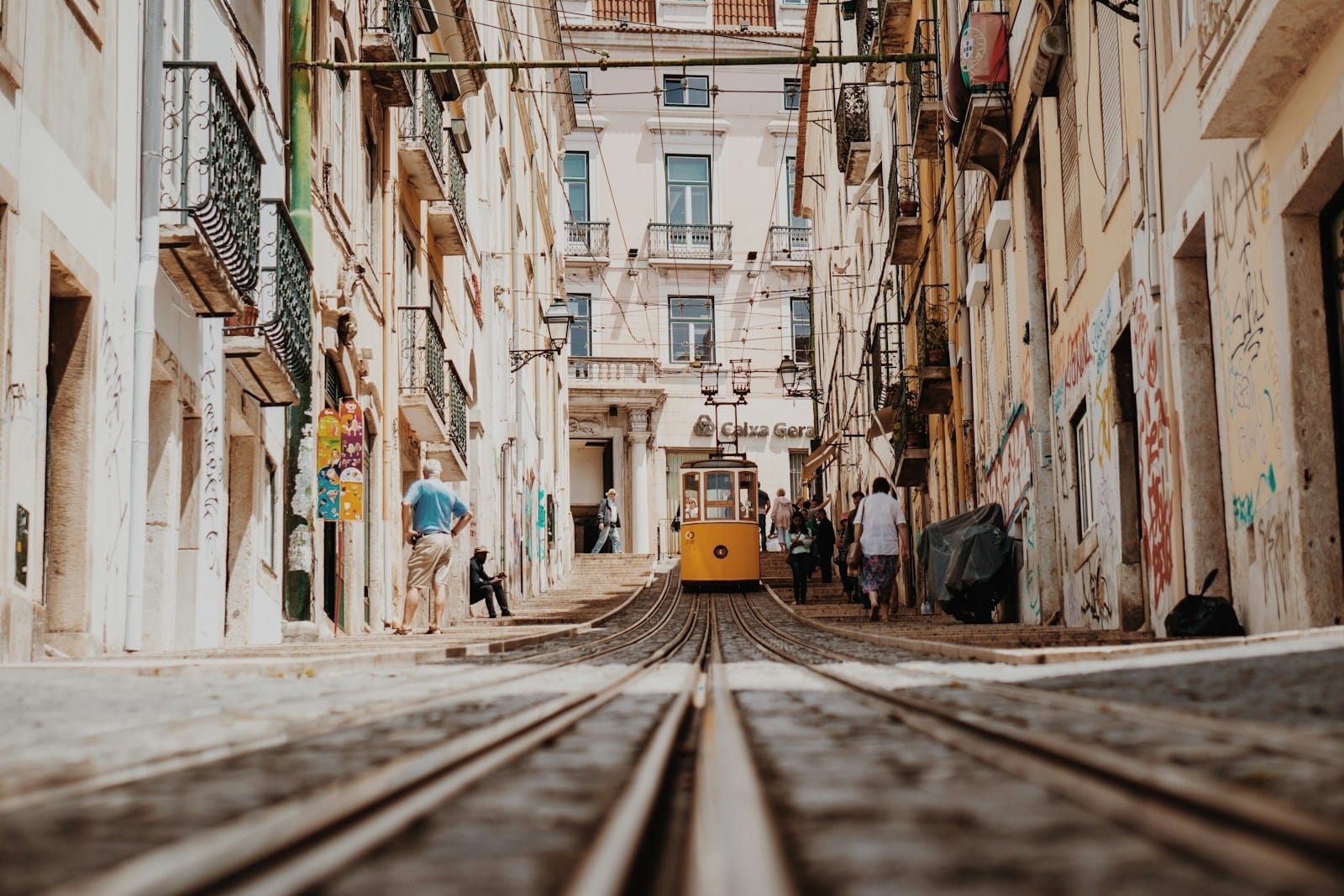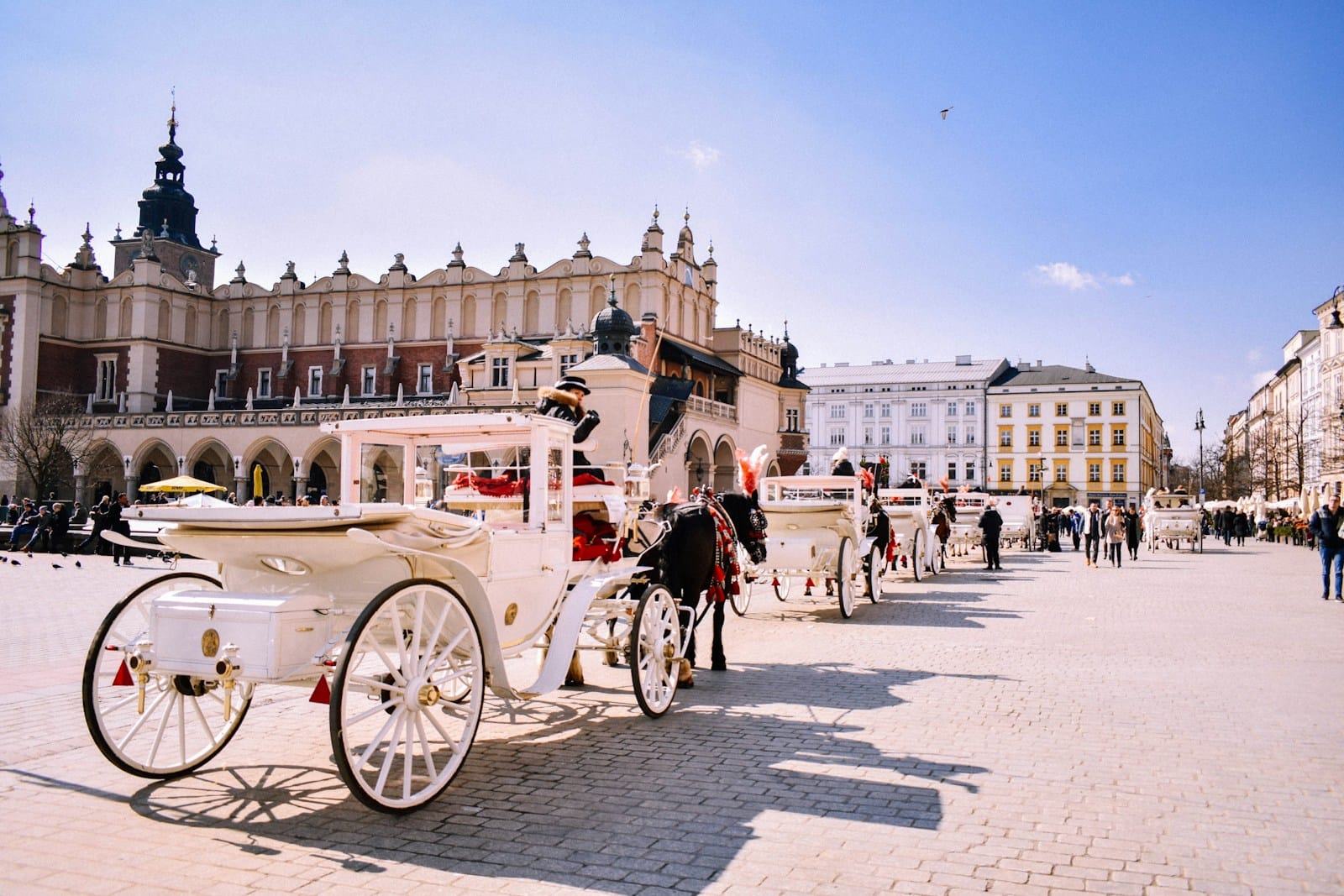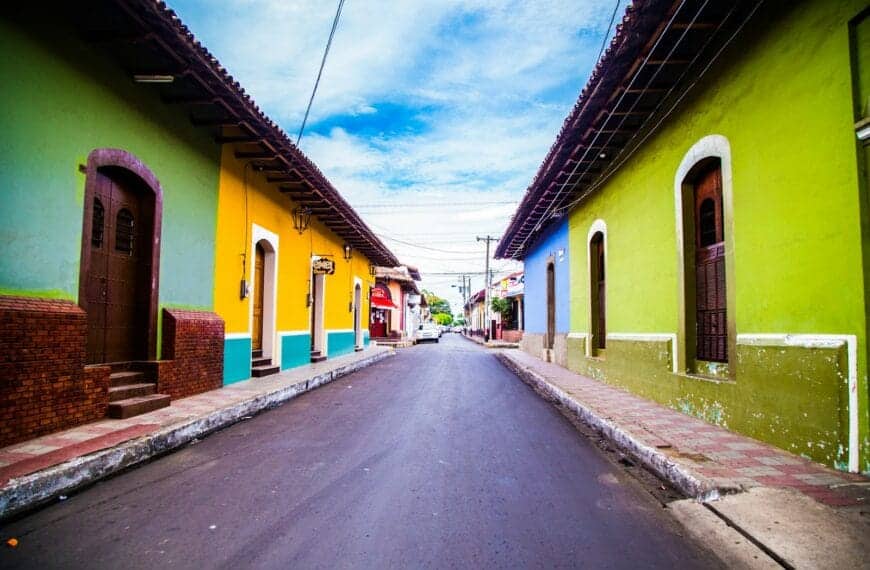Lisbon Travel Guide – Discover the Soul of Portugal’s Capital
Intro to Lisbon Travel Guide
Lisbon is a city that blends the ancient with the modern, the local with the global, and the coastal calm with urban energy. As the westernmost capital in mainland Europe, it serves as a cultural bridge between continents — a place where Moorish castles, Roman ruins, and tiled façades coexist with tech startups, food markets, and vibrant street art.
This Lisbon travel guide is designed for travelers who want more than highlights. You’ll find real value — from what to do and where to stay to cultural context and essential logistics. Whether you’re planning your first trip or a return visit, this guide will help you explore the Portuguese capital like a local — with intention, confidence, and curiosity.
Browse top-rated Lisbon tours and things to do — from iconic tram rides and riverside monuments to hidden bars, palaces, and culinary experiences.
Nearby destinations to Explore from Lisbon
Cascais | Coimbra | Évora | Fátima | Nazaré | Obidos | Porto | Setúbal | Sintra | Tomar
💡Quick Facts:
City: Lisbon
Country: Portugal
Continent: Europe
Area: 100 km²
Population: ~550,000 (metro ~2.8 million)
Density: ~5,500/km²
State/Province: Lisbon District
Regions/Subregions: Greater Lisbon, Lisbon Metropolitan Area
Official Language: Portuguese
Regional Languages: English widely spoken in tourist areas
Currency: Euro (EUR)
Time Zone: Western European Time (UTC+0, UTC+1 DST)
Airports: Humberto Delgado Airport (LIS)
Climate: Mediterranean; mild winters, hot dry summers
Known For: Alfama district, tram 28, Belém Tower, Fado music, pastel de nata, historic hills, UNESCO heritage
🛂Arrival Info:
EU/EEA/Swiss nationals: No visa required.
Non-EU visitors: Schengen visa required (90 days in 180-day window).
Main airport: Humberto Delgado Airport (LIS), ~7 km from city center.
🏥Health Info:
Vaccines: Routine EU vaccinations advised.
Healthcare: Public and private hospitals; English spoken in most clinics.
Insurance: EU EHIC cards accepted; others should carry travel insurance.
🚑 Check travel insurance options for travel emergencies, delays, and medical needs abroad — Get coverage here
💉 Stay Informed with Official Updates: WHO – International Travel & Health | CDC – Travel health updates
🚨Travel Advisory:
Crime: Pickpocketing common on trams, buses, tourist spots (especially Tram 28).
Scams: Fake petitions and friendly stranger distractions are typical.
Protests: May occur downtown; usually peaceful but avoid large gatherings.
Weather risks: Occasional heatwaves in summer; coastal winds strong near viewpoints.
🌍Track Real-Time Official Updates: US Travel Advisory | UK Foreign Travel Advice | Government of Canada | NZ SafeTravel
🥳Holidays:
Carnival: February/March (dates vary).
Freedom Day: April 25.
Portugal Day: June 10.
Saint Anthony Festival (Lisbon): June 13.
Republic Day: October 5.
💰Visitor Info:
Currency use: Euro; cards widely accepted.
Tipping: 5–10% at restaurants is appreciated.
Tourist tax: €2 per person per night (max 7 nights).
Daily budget:
Budget €50–70
Mid-range €100–180
Luxury €250+
🛫Airports:
LIS (Humberto Delgado): Direct flights to Europe, Americas, Africa.
Ground access: Metro, buses, ride-hailing, taxis, Aerobus to city center.
🧳 Delayed or canceled flight? Check if you’re eligible for compensation
🚍Transport:
Urban: Metro, trams, buses, funiculars; Viva Viagem card recommended.
Walking: Common in central areas; steep hills and cobblestones.
Ride-hailing: Uber, Bolt, and taxis available.
Trains: Depart from Oriente, Santa Apolónia, and Rossio stations.
🚗 Book reliable airport transfers and in-city rides in advance. Reserve your ride here
🛰️Connectivity:
SIM/eSIM: Available at airport and stores (Vodafone, NOS, MEO).
Coverage: Strong 4G/5G in urban areas.
Wi-Fi: Free in hotels, cafés, and public plazas.
🛜 Stay connected abroad with affordable eSIM data packs. Get your eSIM here
📜Laws & Etiquette:
Alcohol: Legal age 18; drinking in public tolerated in moderation.
Smoking: Banned indoors in public venues.
Dress: Casual but tidy; modest attire in churches.
Cultural norms: Portuguese greetings are polite; avoid loud or brash behavior.
👮Emergency Info:
Emergency number: 112.
Police (non-emergency): 213 422 222.
Tourist police: Available in main tourist zones.
Embassies: Concentrated in central Lisbon.
🏛️ Use embassy locator tools: Embassies Worldwide
🌞Weather:
Winter (Dec–Feb): Mild, 8–16°C with some rain.
Spring (Mar–May): Sunny, 15–22°C.
Summer (Jun–Aug): Hot, 25–35°C, dry.
Autumn (Sep–Nov): Warm early, cooling to 12–20°C.
🌦️ Stay prepared—check the weather forecast for your destination — Weather Forecast
Why Visit Lisbon
Lisbon is not just photogenic — it’s profoundly livable. It’s a city where you can start your morning with a waterfront espresso, hike to a medieval castle by lunch, and sip wine at a rooftop bar while the sun sets behind the Ponte 25 de Abril.
Its history stretches back thousands of years, influenced by Phoenician traders, Roman settlers, Moorish rule, and the global reach of Portuguese explorers. This layered past is visible in the street patterns, local dialects, culinary traditions, and architecture.
Unlike many European capitals, Lisbon has maintained an authentic pace of life. You’ll see neighbors chatting across balconies, musicians playing in leafy plazas, and fish grilled on sidewalk stalls during summer festivals. It’s a working city that just happens to be beautiful.
The affordability factor is another draw. While prices have risen in recent years, Lisbon still offers exceptional value for accommodation, transport, and food when compared to cities like Paris, Amsterdam, or Rome.
Best Time to Visit Lisbon
Lisbon’s Mediterranean climate ensures mild winters and long, sunny summers. The city receives over 280 days of sunshine annually, making it a year-round destination. That said, the best time depends on your travel style.
- Spring (March–May) is arguably the ideal window. The weather is warm but not hot, tourist numbers are manageable, and jacaranda trees begin to bloom across the city. It’s perfect for alfresco dining, miradouro visits, and cultural events like the Lisbon Fish and Flavors Festival.
- Summer (June–August) brings high temperatures and higher crowds. If you visit in June, you’ll experience Festas de Lisboa, a city-wide celebration with music, street food, and sardine grilling in every neighborhood. July and August are great for beach days or combining city and coast, but you’ll need to book in advance and prepare for heat.
- Fall (September–October) is a local favorite. The crowds thin, the water is still warm, and wine and food festivals take center stage. Hotel rates dip slightly, and the weather is still good enough for rooftop evenings and day trips to Cascais or Sintra.
- Winter (November–February) is low season, but far from off-limits. Lisbon rarely sees frost, and winter light adds a cinematic quality to its tiled buildings and foggy river mornings. Museums are quieter, cafés are cozy, and airfare is often cheaper.
Top Things to Do in Lisbon
Walking through Lisbon feels like stepping through centuries. Each neighborhood tells its own story — some whispering with ruin, others shouting in neon and tile.
- Tram 28 is iconic for a reason. It offers a cross-section of Lisbon’s most historic and photogenic quarters. Starting near Martim Moniz and winding up through Graça, Alfama, Baixa, and Estrela, the tram is a moving museum. It’s also part of the city’s everyday rhythm. Aim for an early morning or post-dinner ride to avoid queues.
- The São Jorge Castle dominates the Alfama skyline. Its ramparts offer some of the best panoramic views of Lisbon. Inside, the courtyards and walkways feel peaceful, especially in the late afternoon. For photographers, this is prime golden hour territory.
- Belém, Lisbon’s riverside district of monuments, is essential. The Jerónimos Monastery, built in stunning Manueline style, houses the tomb of Vasco da Gama and is as intricate as any European cathedral. Just a short walk away is Belém Tower, originally built to defend the harbor, and the Monument to the Discoveries, celebrating Portugal’s seafaring legacy.
- Make time for the Museu Nacional do Azulejo. It’s one of Europe’s most unique museums, dedicated entirely to the craft and evolution of Portuguese tiles. The centerpiece is a 23-meter-long panel showing Lisbon before the devastating 1755 earthquake.
- For a change of pace, head to LX Factory, a former industrial complex turned creative village. You’ll find independent fashion shops, concept cafés, art galleries, coworking spaces, and one of the best bookstores in Europe — Ler Devagar. It’s a modern contrast to Lisbon’s historic fabric, and a great place for a half-day of browsing and people-watching.
- Sunset is best appreciated from one of Lisbon’s many miradouros (viewpoints). Popular ones include Miradouro da Senhora do Monte and Miradouro de Santa Catarina. For something more social, grab a cocktail at a rooftop bar like Park (on top of a parking garage in Bairro Alto) or Topo in Martim Moniz.
Lisbon Neighborhoods Worth Exploring
Each district in Lisbon carries its own mood, layout, and hidden gems. You could spend a full day in each and still leave wanting more.
- Alfama is the oldest part of the city. Its narrow alleyways were once enclosed by city walls and still follow a medieval pattern. Fado is strongest here — both musically and emotionally. You’ll find small taverns, laundry lines overhead, and panoramic lookouts between staircases.
- Baixa is Lisbon’s downtown grid, rebuilt after the 1755 earthquake. Its neoclassical architecture and symmetrical layout contrast sharply with the rest of the city. Visit Rua Augusta, Rossio Square, and Praça do Comércio, where the city meets the river. Baixa is also home to elegant cafés, boutiques, and major banks and hotels.
- Chiado borders Baixa and offers a more artistic and bohemian feel. This was the haunt of Fernando Pessoa and is still a literary district, with bookshops, the Café A Brasileira, and public statues of poets. Art galleries and upscale fashion stores blend here seamlessly.
- Bairro Alto is best known for nightlife. The bars are small, the drinks are strong, and the crowds spill into the streets on weekends. During the day, however, it’s surprisingly quiet — and you’ll find charming viewpoints, boutique hotels, and classic azulejo façades.
- Príncipe Real is trendy, leafy, and residential. Home to Lisbon’s LGBTQ+ nightlife, organic markets, designer shops, and family-friendly parks, it’s ideal for travelers who want a balance between local life and central access. Many long-stay travelers and digital nomads base themselves here.
- Cais do Sodré was once a red-light district and sailor’s port. Today, it’s a nightlife hub that also houses the Time Out Market, a curated food hall featuring the best of Lisbon’s chefs and local dishes. The riverside promenade is ideal for sunset walks, and ferry terminals make this a gateway to other districts and across the river.
- Belém offers museums, monuments, and wide boulevards. It’s more spread out, so ideal for cycling or tram rides. It also connects easily with the riverfront and has open green space, which can be rare in Lisbon’s hilly core.
Where to Stay in Lisbon
Lisbon’s accommodations range from centuries-old palaces and boutique guesthouses to modern apartments and hostels. Where you stay depends on what kind of experience you want.
Travelers who prioritize walkability and sightseeing should stay in Baixa or Chiado. These neighborhoods are central, flat, and within reach of major landmarks like Praça do Comércio, the Elevador de Santa Justa, and Rossio Station. You’ll find everything from boutique hotels in historic buildings to modern apartments with balconies.
- Alfama is perfect for those who want old-world charm, quiet evenings, and intimate Fado bars steps from their door. Just be prepared for narrow staircases and limited car access — what you lose in convenience, you gain in character.
- Príncipe Real caters to design-conscious travelers. Its leafy streets house concept hotels, minimalist Airbnbs, and residential villas with breakfast patios. This area is also excellent for LGBTQ+ travelers, given its proximity to nightlife without the noise of Bairro Alto.
- Bairro Alto offers affordability and late-night access. It’s ideal for young travelers or those who want to step from their hotel into the nightlife. Just be sure to book accommodations with soundproofing — street noise here can last well into the morning.
- Cais do Sodré is ideal for food lovers. Between the Time Out Market, Ribeira waterfront, and ferry access, it offers both flavor and flexibility. Some rooms even overlook the Tagus River.
Luxury travelers can consider Palácio Príncipe Real, The One Palácio da Anunciada, or Memmo Alfama — boutique hotels with local design, rooftop views, and elevated service.
Budget travelers are also well served. Hostels like Selina Secret Garden, Home Lisbon Hostel, or We Love F Tourists offer clean dorms, group dinners, and walking tours built into the stay.
How to Get Around Lisbon
Lisbon’s terrain is famously hilly, but its transport system makes exploring easy and efficient.
- The Metro is clean, fast, and useful for reaching places like the airport, Parque das Nações, and residential districts. For tourists, the Blue and Green lines cover many important zones.
- The Trams and Elevadores are as functional as they are scenic. The most famous, Tram 28, covers a huge range of neighborhoods. Elevadores (funiculars) like Bica and Glória help you skip steep hills and double as heritage experiences.
- Buses fill in the gaps where the metro and tram don’t reach, especially useful for getting to Belém or the Museu do Azulejo. Schedules are frequent and reliable.
- Ferries cross the river to destinations like Cacilhas and Almada. They offer budget-friendly skyline views and access to Cristo Rei or local seafood restaurants.
- Walking is a joy — but expect cobblestones, inclines, and heat. Wear supportive shoes and be cautious in wet weather. Some areas, like Chiado or Baixa, are flatter and stroller-friendly.
- The Lisboa Card is highly recommended for visitors. It includes unlimited travel on public transport, skip-the-line entry to many attractions, and discounts at restaurants and shops.
- Rideshare services like Uber and Bolt are widely available. Taxis are safe and regulated, but confirm the meter is used.
Lisbon’s Food Scene and What to Eat
- Lisbon’s food scene is a reflection of its coastal geography, colonial history, and homegrown simplicity. The best meals often come from tascas — small, family-run restaurants where handwritten menus still rule.
- You’ll encounter salt cod (bacalhau) prepared over 365 ways — try Bacalhau à Brás or Bacalhau com Natas. Seafood dominates menus: grilled sardines, octopus salad, seafood rice (arroz de marisco), and shellfish in garlic wine sauce are essentials.
- For meat, try Alentejano pork with clams or a Bifana sandwich from a hole-in-the-wall counter. Prego — a steak sandwich often served after a seafood meal — is the perfect pub snack.
- The pastel de nata is Lisbon’s crown jewel. These flaky, eggy tarts are best eaten warm with a dusting of cinnamon. Pastéis de Belém is the birthplace, but many locals prefer the creamier filling of Manteigaria.
Markets worth visiting include:
- Time Out Market – Gourmet food stalls curated by Lisbon’s top chefs. Try small plates or local wines.
- Mercado de Campo de Ourique – More local, less crowded, equally diverse.
- Mercado da Ribeira – The traditional half of Time Out Market still sells fresh produce and seafood.
For a deeper experience, book a Lisbon food tour. They often include tastings of ginjinha (sour cherry liqueur), petiscos (Portuguese tapas), and insights into Lisbon’s culinary evolution.
Best Day Trips from Lisbon
Lisbon’s surroundings are rich in cultural and natural treasures, most of which are reachable in under 90 minutes.
- Sintra feels like a fantasy film set. Visit Pena Palace for its colorful turrets and eclectic design, then descend to Quinta da Regaleira, known for its mysterious initiation wells and esoteric symbolism. Moorish Castle ruins offer sweeping views of the region.
- Cascais is a former royal retreat turned beach town. Its boardwalk connects multiple beaches, and the old town offers great shopping and seafood. Take a dip at Praia da Rainha or cycle along the coast to Guincho Beach.
- Évora, in the Alentejo region, is a living museum of Roman temples, Gothic churches, and whitewashed homes. Don’t miss the eerie Chapel of Bones. It’s best accessed by car or through a guided day tour.
- Arrábida Natural Park offers a more off-the-beaten-path experience with crystal-clear coves, cliffs, hiking trails, and opportunities for kayaking or wine tasting in nearby Azeitão.
- Almada, just across the river by ferry, features panoramic views of Lisbon and the towering Cristo Rei statue. It’s also known for authentic seafood restaurants like Ponto Final.
Lisbon for Every Kind of Traveler
Lisbon works for nearly every travel style:
- Solo Travelers will feel safe and welcome. Join walking tours, food tours, or digital nomad coworking sessions in cafés or LX Factory.
- Couples will enjoy Lisbon’s romantic outlooks, intimate Fado nights, and boutique hotels with river views. Book a sunset cruise or a private tuk-tuk tour for something special.
- Families can enjoy kid-friendly museums like the Oceanário, science centers, trams, and beach trips to Estoril or Carcavelos. Many restaurants are child-friendly, and public transport is stroller-accessible in most areas.
- Digital Nomads and long-stay travelers will appreciate the balance between affordability and lifestyle. Lisbon offers fast Wi-Fi, coworking spaces, English-speaking locals, and a global community — particularly in Príncipe Real and Alcântara.
Discover top-rated Lisbon tours and experiences, and explore the best things to do in Lisbon — from food walks and tram rides to palace day trips and sunset cruises. Book early for exclusive access and flexible cancellation.
Essential Lisbon Travel Tips
- Avoid peak lunch hours (1–2:30 p.m.) if you want to be seated quickly without a reservation.
- Don’t expect dinner before 7:30 p.m. in most restaurants.
- Learn basic Portuguese phrases — it’s appreciated, even if many locals speak English.
- Museums often close on Mondays — plan accordingly.
- Taxis are required by law to use meters — don’t accept flat rates unless prebooked.
- Tap water is safe and free upon request, though not always automatically offered.
Suggested Itineraries
Three-Day Itinerary
Day 1: Alfama, Tram 28, São Jorge Castle, Fado dinner
Day 2: Belém monuments, Pastéis de Belém, Tagus cruise
Day 3: Sintra (Pena Palace, Quinta da Regaleira), return via Rossio
Five-Day Itinerary
Includes above plus:
Day 4: LX Factory, MAAT, Time Out Market, rooftop drinks
Day 5: Day trip to Cascais or Arrábida + seafood lunch
Seven-Day Itinerary
Adds:
Day 6: Évora day trip or wine tasting in Setúbal
Day 7: Museum day (Gulbenkian + Azulejo) + final walk through Chiado + café break with a pastel de nata
Nearby Destinations to Explore
- Porto
Portugal’s second city offers riverside charm, port wine cellars, and striking azulejo architecture. Easily reached by train or domestic flight, Porto makes a dynamic cultural contrast to Lisbon and pairs well on any Portugal itinerary. - Fátima
A globally recognized pilgrimage site, Fátima draws millions of visitors to its sanctuary and candlelit processions. Ideal for spiritual or cultural travelers, it’s just 90 minutes by road or bus. - Coimbra
Home to one of Europe’s oldest universities, Coimbra is a riverside city steeped in academic tradition and medieval charm. It’s perfect for a one- or two-day extension if you’re heading north. - Nazaré
Famous for record-breaking waves and cliffside views, Nazaré is a must for surfers and coastal photographers. Visit in winter for a chance to witness the world’s largest surfable waves. - Tomar
A historic town dominated by the Convent of Christ — a UNESCO World Heritage Site and former Knights Templar stronghold. Tomar offers deep medieval history with fewer crowds, ideal for heritage-focused travelers. - Serra da Estrela
Portugal’s highest mountain range offers hiking, panoramic viewpoints, glacial valleys, and even winter skiing. It’s best visited as part of a longer inland journey.
Lisbon is not a checklist city. It’s a place that rewards those who walk slowly, eat with curiosity, and seek out moments between the landmarks. From castle towers to riverbanks, tiled façades to street food counters, this Lisbon travel guide shows you how to connect with Portugal’s capital in a meaningful way — whether you’re here for three days or three weeks.
Book curated Lisbon tours and local experiences to discover Portugal’s capital through food, architecture, music, and history — the way locals live it.










